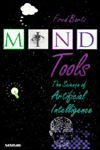As promised in my recent blog, I am returning with a few suggestions of recent science books that are suitable for gift-giving. I haven’t read all of these in detail, but they are published by reputable publishers and written by credible authors. This is the third of three postings, organized by subject area, this time covering technology and the history of science from the mid-twentieth century to recent decades.
I’ll begin with a book by molecular biologist and current President of the Royal Society Venki Ramakrishnan,  Gene Machine: The Race to Decipher the Secrets of the Ribosome. This history illuminates the competitive and collaborative aspects of scientific discovery as viewed through the eyes of a winner that race which led to his Nobel Prize for chemistry in 2009.
Gene Machine: The Race to Decipher the Secrets of the Ribosome. This history illuminates the competitive and collaborative aspects of scientific discovery as viewed through the eyes of a winner that race which led to his Nobel Prize for chemistry in 2009.
In the untold-but-important tales department is  Sam Goudsmit and the Hunt for Hitler’s Atom Bomb by Martijn Van Calmthout. The publisher’s enticing summary reads in part as follows:
Sam Goudsmit and the Hunt for Hitler’s Atom Bomb by Martijn Van Calmthout. The publisher’s enticing summary reads in part as follows:
As a young man Sam Goudsmit came to international attention when he and a colleague published a seminal paper that introduced the property of electron spin into atomic theory. This discovery helped to remove remaining questions about atomic theory and brought him into contact with the likes of Einstein, Heisenberg, and other leading physicists of the early 20th century. In 1927, he was offered a position at the University of Michigan and moved with his wife to the United States.
When the Nazis invaded the Netherlands, Goudsmit, a Jew, feared for the lives of his parents and other family members still in Holland. His attempts to get his German colleague Werner Heisenberg to intervene on their behalf proved fruitless. Toward the end of World War II, he was recruited by the Department of Defense as the scientific leader of the co-called Alsos mission, whose task was to search for evidence of German atom-bomb development. The team eventually found stores of uranium ore and a nuclear reactor, among other evidence. While in Europe, Goudsmit had an opportunity to return to The Hague, his hometown. There in the rubble of his parent’s house, he discovered that they had been deported to Auschwitz.
After the war, he returned to the United States and became the editor of Physical Review and Physical Review Letters; the latter is a leading physics journal to this day. But guilt over his failure to save his parents haunted him for the rest of his life.
The Atomic Bomb remains the most devastating weapon ever unleashed in war, but in the paperback original  Genius Weapons: Artificial Intelligence, Autonomous Weaponry, and the Future of Warfare, physicist and futurist Louis A. Del Monte speculates about a dystopian future when artificially intelligent autonomous weaponry changes the face of warfare. The publisher tempers the dread with this description: “[Although]… such movies as The Terminator and I, Robot may become a frightening reality in the near future, [t]he author concludes with concrete recommendations, founded in historical precedent, to control this new arms race.”
Genius Weapons: Artificial Intelligence, Autonomous Weaponry, and the Future of Warfare, physicist and futurist Louis A. Del Monte speculates about a dystopian future when artificially intelligent autonomous weaponry changes the face of warfare. The publisher tempers the dread with this description: “[Although]… such movies as The Terminator and I, Robot may become a frightening reality in the near future, [t]he author concludes with concrete recommendations, founded in historical precedent, to control this new arms race.”
Moving from autonomous weapons to autonomous cars, science journalist Todd Neff’s new paperback tells the story of  The Laser That’s Changing the World: The Amazing Stories behind Lidar, from 3D Mapping to Self-Driving Cars. I live in suburban Pittsburgh, and in my trips into the city, I occasionally encounter a self-driving vehicle with a spinning Lidar unit on its roof. For now, such an event remains a curiosity, but within a few years, it will be a regular occurrence, and not just in cities where AI and robotics are prominent in the local economy.
The Laser That’s Changing the World: The Amazing Stories behind Lidar, from 3D Mapping to Self-Driving Cars. I live in suburban Pittsburgh, and in my trips into the city, I occasionally encounter a self-driving vehicle with a spinning Lidar unit on its roof. For now, such an event remains a curiosity, but within a few years, it will be a regular occurrence, and not just in cities where AI and robotics are prominent in the local economy.
I have been following artificial intelligence for a long time, and the title of my 1992 book for young readers still applies. Rather than viewing AI devices as stand-alone pieces of technology, I prefer to view them as  Mind Tools that enhance our mental abilities just as electrical and mechanical tools enhance our physical ones. In the 26 years since I published that book, we have added big data to our computing toolbox. I mention that as a prelude to the final two books in this roundup,
Mind Tools that enhance our mental abilities just as electrical and mechanical tools enhance our physical ones. In the 26 years since I published that book, we have added big data to our computing toolbox. I mention that as a prelude to the final two books in this roundup,  Superminds: The Surprising Power of People and Computers Thinking Together by Thomas W. Malone, professor of work and organizational studies at MIT’s Sloan School and
Superminds: The Surprising Power of People and Computers Thinking Together by Thomas W. Malone, professor of work and organizational studies at MIT’s Sloan School and  The Model Thinker: What You Need to Know to Make Data Work for You by Scott E. Page, the Leonid Hurwicz Collegiate Professor of Complex Systems, Political Science, and Economics at the University of Michigan.
The Model Thinker: What You Need to Know to Make Data Work for You by Scott E. Page, the Leonid Hurwicz Collegiate Professor of Complex Systems, Political Science, and Economics at the University of Michigan.
All of these books will boost the natural intelligence of anyone who reads them, which makes them perfect gifts for lovers of science history and technology.
Blogger and reviewer Fred Bortz is the author of numerous science books for young readers.
A request from the blogger:
Please let me know you appreciated this posting by adding a comment or sending an email with your thoughts to [email protected] . Many thanks!

Thank you for the list. I would like to gift one or two of them to myself…Such as the Gene Machine, and the Mind Tools…